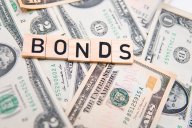Featured articles

Euro forecast: Third-party price target
Read our EUR/USD forex rate forecast for 2025 and beyond, with insights from third-party analysts and market experts
12:06, 4 July 2025

Tesla stock forecast: third-party Tesla (TSLA) price target
Discover the Tesla (TSLA) stock price forecast, with predictions, price drivers, and Tesla CFDs trading strategies on Capital.com
12:42, 10 July 2025

Trading Bitcoin's all-time high in July
Breakout in price finally sees $118,000, keeping technicals bullish in both daily and weekly time frames.
10:16, 11 July 2025
Latest news

Top 10 biggest oil companies in the world
Discover the 10 biggest oil companies in the world for traders, why they are so liquid, and the market strategies to consider.
16:35, 24 July 2025

Trading Tesla after its earnings miss
Q2 earnings and revenue miss sees shares drop in extended trading as CEO Musk warns of the possibility of a “few rough quarters”
06:21, 24 July 2025

What currencies are pegged to USD?
Learn all about the US dollar’s pegs, including why countries peg their currencies to USD, and how it can affect forex trading.
14:19, 23 July 2025

Is the US bond market on the brink of a dangerous debt death spiral?
Ray Dalio, the billionaire hedge fund manager who predicted the 2008 market crash, is once again raising the alarm about an economic breakdown worse than a recession.
20:48, 22 July 2025

Why platinum just broke a decade long resistance
A line can be drawn on platinum's price chart starting in 2008, capturing one, two, three, four reactions over 17 consecutive years.
20:04, 22 July 2025

Trading the Dow: Earnings steal the show
The value of the key US equity index lagged last week against those with heavier tech weightings, but its technical overview remains bullish and still a story of net long bias for CoT speculators.
09:00, 21 July 2025

Why Michael Burry just sold all his stocks
Michael Burry just sold over $70 million in stock, liquidating his entire portfolio except for one stock, doubling down on a company that other investors are fleeing in droves.
15:28, 18 July 2025

An unprecedented signal just triggered on the US Dollar
The US dollar just collapsed against the Taiwanese new dollar, with the pairing falling 8% in just a few days, crashing below this key support line and reaching its lowest level in over a year.
14:17, 17 July 2025

Trading Gold’s short-term bull channel
Denial of Fed Chair Powell’s removal has meant a pullback off the highs, but what will it take to get gold prices to break out of its short-term bull channel?
07:23, 17 July 2025

Nasdaq 100: Trading US CPI
Futures up on Nvidia’s China sales resumption of AI chips, but the next test is US pricing data.
06:29, 15 July 2025
